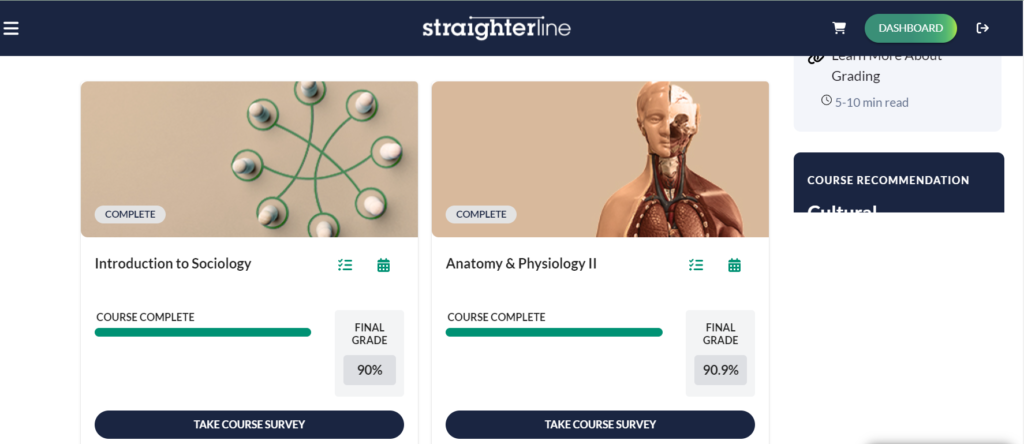Acute Pain Nursing Diagnosis & Care Plans: + 5 Examples PDF
Pain is a complex and subjective experience that significantly impacts an individual’s quality of life. In nursing care, effective pain management begins with a thorough assessment to understand the nature and intensity of the pain experienced by patients. This article delves into the critical role of pain assessment in nursing care, highlighting the tools, techniques, and considerations essential for developing a comprehensive care plan.
Definition of Pain Assessment
Pain assessment involves a systematic approach to evaluating a patient’s pain experience. It goes beyond just measuring pain intensity and includes understanding the location, quality, duration, and factors that exacerbate or alleviate the pain. By utilizing standardized pain assessment tools, nurses can gather objective data to guide treatment decisions and monitor the effectiveness of interventions.
Importance of Pain Assessment
Accurate pain assessment is fundamental in nursing care for several reasons. Firstly, it ensures that patients receive timely and appropriate pain management interventions tailored to their individual needs. Secondly, regular pain assessment allows healthcare providers to track changes in pain levels over time, enabling adjustments to treatment plans as necessary. Moreover, effective pain assessment promotes patient-centered care by acknowledging and addressing the subjective nature of pain experiences.
Tools for Pain Assessment
Nurses employ various tools to assess pain levels in patients. Commonly used tools include numerical rating scales, visual analog scales, Wong-Baker FACES Pain Rating Scale, and the FLACC Scale for non-verbal patients or children. These tools provide a standardized way to quantify and communicate pain intensity, facilitating better communication between patients and healthcare providers.
Identifying Pain Triggers and Aggravating Factors
Beyond measuring pain intensity, nurses must identify the triggers and aggravating factors that contribute to a patient’s pain experience. Understanding what exacerbates or alleviates pain is crucial for developing targeted interventions that address the root causes of discomfort. By exploring physical, emotional, psychological, and environmental factors influencing pain perception, nurses can create holistic care plans that promote optimal pain management outcomes.
Pain assessment serves as the cornerstone of effective pain management in nursing care. By employing standardized tools, identifying triggers, and considering individual patient experiences, nurses can develop personalized care plans that address both the physical and emotional aspects of pain. Through comprehensive assessment practices, healthcare providers can enhance patient comfort, improve treatment outcomes, and foster a therapeutic environment centered on compassionate care.
This article provides an overview of the significance of pain assessment in nursing care, setting the stage for subsequent discussions on interventions and evaluation strategies in comprehensive pain management plans.
Assessment of Pain:
Pain is a complex and subjective experience that significantly impacts the well-being of individuals across various healthcare settings. As frontline caregivers, nurses play a pivotal role in the assessment, management, and mitigation of pain. The development of a comprehensive “Pain Nursing Care Plan” is essential to provide personalized and effective interventions that address the diverse nature of pain. This care plan encompasses the evaluation of different pain types, ranging from acute to chronic, as well as breakthrough episodes. Utilizing specialized tools and scales for pain assessment, such as the Numeric Rating Scale and Wong-Baker FACES Pain Rating Scale, allows healthcare professionals to gain insight into the intensity and character of the pain experienced by the patient. Moreover, understanding the multifaceted factors influencing pain perception, including physical, psychological, and social elements, guides the creation of a holistic care plan. This integrated approach ensures that nursing interventions are tailored to the individual needs and experiences of each patient, fostering optimal pain management and improved overall quality of life. In this context, the “Nursing Care Plan for Pain” serves as a structured framework for the systematic assessment, planning, implementation, and evaluation of interventions aimed at alleviating and managing pain effectively.
Types of Pain:
- Acute Pain:
- Definition: Acute pain is sudden in onset and usually short-lived. It is often a response to tissue damage or injury, serving as a warning signal to protect the body.
- Characteristics: Sharp, intense, and time-limited. Typically resolves as the underlying cause heals.
- Example: Surgical pain, trauma, postoperative pain.
- Chronic Pain:
- Definition: Chronic pain persists for an extended period, often beyond the expected time for tissue healing. It may result from ongoing conditions or diseases.
- Characteristics: Dull, aching, or throbbing. Can be intermittent or constant, lasting for weeks, months, or even years.
- Example: Arthritis pain, neuropathic pain, chronic lower back pain.
- Breakthrough Pain:
- Definition: Breakthrough pain is a transient flare of intense pain that occurs despite baseline pain management. It can occur in individuals with chronic pain conditions.
- Characteristics: Intense and sudden, often requiring additional or breakthrough medication for relief.
- Example: Sudden worsening of cancer-related pain in a patient on chronic pain medication.
Tools and Scales for Pain Assessment:
- Numeric Rating Scale (NRS):
- Description: A 0 to 10 scale where the patient rates their pain intensity, with 0 being no pain and 10 being the worst pain imaginable.
- Use: Widely used in clinical settings for quick pain assessment. Easily understood by patients of various ages.
- Wong-Baker FACES Pain Rating Scale:
- Description: A visual scale using facial expressions ranging from a smiling face (no pain) to a crying face (worst pain).
- Use: Particularly useful for assessing pain in pediatric patients or those with communication challenges.
- Brief Pain Inventory (BPI):
- Description: A multidimensional pain assessment tool that includes questions about pain intensity, location, and interference with daily activities.
- Use: Provides a comprehensive understanding of the impact of pain on a patient’s life and functional status.
Factors Influencing Pain Perception:
- Physical Factors:
- Biological Influences: Genetics, age, gender, and overall health can affect how an individual perceives and responds to pain.
- Physiological Factors: Tissue damage, inflammation, and nerve involvement contribute to the intensity and nature of pain.
- Psychological Factors:
- Cognitive Factors: Beliefs, expectations, and coping strategies influence how individuals interpret and manage pain.
- Emotional Factors: Anxiety, depression, and stress can heighten pain perception and affect the overall experience of pain.
- Social Factors:
- Cultural Influences: Cultural beliefs and practices can shape how individuals express and cope with pain.
- Social Support: The presence or absence of a supportive social network can impact an individual’s ability to manage and cope with pain.
Understanding the interplay of these factors is crucial for a holistic pain assessment. A comprehensive evaluation using appropriate tools and consideration of individualized patient factors contribute to effective pain management strategies.
Setting Goals and Outcomes
When setting goals and outcomes for pain management, it is essential to establish SMART goals and collaborate with patients to ensure realistic expectations are set. Here’s how these key elements can be incorporated:
Setting Goals and Outcomes in Pain Management
SMART Goals for Pain Management:
- Specific: Clearly define the pain management goal, such as reducing pain intensity by a certain percentage.
- Measurable: Use tools like pain scales to quantify progress objectively.
- Achievable: Ensure that the goal is realistic and attainable within a specified timeframe.
- Relevant: Align the goal with the patient’s needs and overall treatment plan.
- Time-bound: Set a deadline for achieving the goal to track progress effectively.
Collaboration with Patients:
- Shared Decision-Making: Involve patients in goal-setting to ensure their preferences and priorities are considered.
- Patient Education: Provide information on treatment options and expected outcomes to empower patients in decision-making.
- Feedback and Adjustment: Regularly review goals with patients, seek feedback, and make adjustments as needed to maintain patient engagement.
By incorporating SMART goals and collaborating with patients in setting realistic expectations, healthcare providers can enhance the effectiveness of pain management strategies and improve patient outcomes. This patient-centered approach fosters a sense of partnership between healthcare professionals and patients, leading to more tailored and successful pain management interventions.
Interventions for Pain Management
Pain management is a crucial aspect of nursing care, aiming to alleviate discomfort and improve the overall well-being of patients. A comprehensive nursing care plan for acute pain involves a combination of pharmacological and non-pharmacological interventions, as well as complementary and alternative therapies tailored to the individual’s needs.
Nursing Care Plan for Acute Pain:
1. Pharmacological Interventions:
a. Analgesics: – Purpose: Relieve pain by inhibiting pain signals. – Examples: Nonsteroidal anti-inflammatory drugs (NSAIDs) for inflammation-induced pain, opioids for moderate to severe pain. – Administration: Administer as prescribed, considering the route, dosage, and frequency. – Monitoring: Assess for adverse effects, such as respiratory depression or gastrointestinal bleeding.
b. Adjuvant Medications: – Purpose: Enhance the analgesic effects of primary medications or manage concurrent symptoms. – Examples: Antidepressants or anticonvulsants for neuropathic pain, anti-anxiety medications for pain-related anxiety. – Administration: Administer according to the prescribed regimen. – Monitoring: Monitor for both pain relief and potential side effects related to adjuvant medications.
2. Non-Pharmacological Interventions:
a. Massage Therapy: – Purpose: Promote relaxation, reduce muscle tension, and improve circulation. – Implementation: Trained massage therapists provide gentle massage to affected areas. – Monitoring: Assess patient response, ensuring comfort and adjusting techniques as needed.
b. Relaxation Techniques: – Purpose: Decrease muscle tension and anxiety, contributing to overall pain relief. – Implementation: Guide patients through deep breathing exercises, progressive muscle relaxation, or guided imagery. – Monitoring: Evaluate patient engagement and relaxation levels, adjusting techniques accordingly.
c. Heat/Cold Therapy: – Purpose: Alleviate pain through vasodilation (heat) or vasoconstriction (cold), reducing inflammation and promoting comfort. – Implementation: Apply heat/cold packs or utilize warm/cold compresses as directed. – Monitoring: Assess skin integrity, ensuring the therapy’s effectiveness without causing harm.
3. Complementary and Alternative Therapies:
a. Acupuncture: – Purpose: Stimulate specific points to balance energy flow and relieve pain. – Implementation: Administered by trained acupuncture practitioners. – Monitoring: Observe patient response and potential improvements in pain scores.
b. Aromatherapy: – Purpose: Use scents to induce relaxation and alleviate pain-related stress. – Implementation: Employ essential oils through diffusion, inhalation, or diluted for topical application. – Monitoring: Assess patient comfort and preferences, adjusting aromas as needed.
Evaluation and Modification:
- Regularly reassess pain intensity using appropriate pain assessment tools.
- Monitor patient responses to interventions and adjust the care plan accordingly.
- Collaborate with the healthcare team to modify medications or therapies based on the patient’s evolving needs.
- Encourage open communication with the patient to address concerns and optimize pain management.
A well-rounded nursing care plan for acute pain integrates pharmacological, non-pharmacological, and complementary approaches, recognizing the importance of individualized care to enhance the patient’s overall comfort and well-being.
Implementation of the Care Plan for Pain Management:
The implementation phase of a nursing care plan for pain involves carrying out the planned interventions designed to alleviate pain and improve the patient’s overall well-being. This critical phase encompasses administering medications, educating patients on self-management techniques, and regular monitoring and reassessment of pain levels.
1. Administering Medications as Prescribed:
a. Analgesics: – Example: Administer acetaminophen 650 mg orally every 4-6 hours as needed for mild to moderate pain.
Implementation: Administer medication at prescribed intervals, ensuring proper dosage and monitoring for any adverse effects.
Documentation: Record the time, dosage, and patient response in the medication administration record (MAR).
b. Opioids: – Example: Administer morphine 2 mg IV every 2 hours as needed for severe pain (use a patient-controlled analgesia pump if available).
Implementation: Administer opioids cautiously, monitoring for respiratory depression, sedation, and other opioid-related side effects.
Documentation: Record opioid administration details, including dose, route, and patient response.
2. Educating Patients on Self-Management Techniques:
a. Relaxation Techniques: – Example: Teach deep breathing exercises to be performed every hour. – Implementation: Demonstrate proper technique and provide written or visual instructions. – Documentation: Document education provided and patient understanding.
b. Heat/Cold Therapy: – Example: Educate on the use of a heating pad for 15 minutes every 2 hours. – Implementation: Ensure proper application and instruct on precautions to prevent burns or frostbite. – Documentation: Document teaching and patient compliance.
3. Monitoring and Reassessing Pain Levels Regularly:
a. Numeric Rating Scale (NRS): – Example: Assess pain using the NRS every 4 hours.
Implementation: Ask the patient to rate pain intensity on a scale from 0 to 10.
Documentation: Record pain scores and any additional observations or factors influencing pain.
b. Physical Assessment: – Example: Inspect surgical incision site for signs of infection or increased pain.
Implementation: Conduct a thorough physical examination, noting any changes or abnormalities.
Documentation: Document assessment findings and report any concerns to the healthcare team.
Evaluation and Modification:
- Regularly review the effectiveness of administered medications and adjust the plan if needed.
- Assess patient understanding and utilization of self-management techniques.
- Continuously monitor and reassess pain levels, taking into account changes in the patient’s condition or response to interventions.
- Collaborate with the healthcare team to modify the care plan based on the patient’s evolving needs.
By diligently implementing the nursing care plan for pain management, healthcare professionals contribute to the overall effectiveness of interventions, ensuring optimal pain relief and fostering patient well-being. Regular monitoring and adaptation of the care plan allow for a dynamic and patient-centered approach to pain management.
Evaluation and Documentation in Pain Management Nursing Care Plans
Assessing and documenting the effectiveness of interventions is a crucial step in the nursing care plan for pain. As healthcare professionals strive to provide comprehensive and individualized care, regular evaluation allows for adjustments that cater to the dynamic nature of pain and its treatment. This article explores the importance of evaluation and documentation in pain management, highlighting key aspects of the process and providing examples within the context of an acute pain nursing care plan.
Assessing the Effectiveness of Interventions:
- Numeric Rating Scale (NRS) Assessments:
- Example: After administering acetaminophen for mild to moderate pain as per the nursing care plan, the nurse reassesses pain using the NRS. If the patient’s pain decreases from 7 to 4, the intervention is deemed partially effective.
- Physical Examination:
- Example: Following a massage therapy session, the nurse examines the patient for signs of reduced muscle tension and improved comfort. If the patient reports relief and the physical assessment supports this, the massage therapy intervention is considered effective.
- Ongoing Communication:
- Example: Regular discussions with the patient about their pain experience provide valuable insights. If the patient reports increased pain relief or better coping mechanisms, the interventions, such as relaxation techniques, are likely effective.
Documenting Changes in Pain Levels and Response to Treatment:
- Accurate Pain Documentation:
- Example: Documenting pain levels at regular intervals using standardized scales, such as the NRS, provides a clear picture of the patient’s response to interventions. For instance, recording a decrease in pain from 8 to 2 after opioid administration demonstrates the efficacy of the medication.
- Descriptive Documentation:
- Example: Detailed documentation includes descriptors of pain quality, location, and factors influencing pain. If a patient with post-surgical pain reports reduced sharp, stabbing pain and improved mobility, this information adds depth to the documentation.
- Adverse Effects Documentation:
- Example: In cases where an adjuvant medication causes drowsiness or nausea, documenting these adverse effects is crucial. This information guides subsequent decisions, such as adjusting the dosage or exploring alternative medications.
Modifying the Care Plan Based on Evaluation Outcomes:
- Medication Adjustments:
- Example: If a patient’s pain remains uncontrolled despite opioid administration, collaborating with the healthcare team to adjust the dosage or consider an alternative opioid may be necessary.
- Tailoring Non-Pharmacological Interventions:
- Example: If a patient consistently reports increased pain relief with heat therapy and reduced effectiveness with massage, modifying the care plan to prioritize heat therapy becomes imperative. Individualized adjustments enhance the patient’s experience and outcomes.
- Reassessing Goals:
- Example: If a patient initially expressed a goal of achieving a pain level of 3 on the NRS but consistently reports satisfaction with a pain level of 5, reassessing and modifying the goal based on the patient’s preferences ensures realistic and achievable targets.
In the nursing care plan for pain, the evaluation and documentation process is a dynamic and iterative component. Regularly assessing the effectiveness of interventions, documenting changes in pain levels, and modifying the care plan based on evaluation outcomes contribute to a patient-centered approach. By prioritizing thorough and accurate documentation, healthcare professionals enhance communication, continuity of care, and the overall quality of pain management for individuals experiencing acute pain.
Collaboration and Communication in Pain Management Nursing Care Plans
Effective collaboration and communication are cornerstones of providing holistic and patient-centered care, especially when dealing with pain management. In the context of nursing care plans for acute pain, interdisciplinary collaboration with healthcare team members and clear communication with patients play pivotal roles in achieving optimal outcomes and enhancing the overall patient experience.
Interdisciplinary Collaboration with Healthcare Team Members:
1. Physicians:
- In the creation of an acute pain nursing care plan, collaboration with physicians is essential. This includes discussing the patient’s pain assessment, current medications, and any adjustments or modifications needed in the treatment plan.
- Example: If a patient reports uncontrolled pain, collaborating with the physician to adjust the dosage or type of analgesic medication based on the patient’s response and the physician’s recommendations.
2. Pharmacists:
- Collaboration with pharmacists ensures a comprehensive understanding of prescribed medications, potential interactions, and adverse effects. Pharmacists can provide valuable insights into medication choices, dosages, and alternative options.
- Example: Consulting with the pharmacist to explore adjuvant medications that may enhance the analgesic effects without compromising the patient’s safety.
3. Physical Therapists:
- Working with physical therapists is crucial for implementing non-pharmacological interventions. Collaboration may involve coordinating exercises and therapeutic activities that promote mobility and alleviate pain.
- Example: Collaborating with a physical therapist to design a personalized exercise routine that aids in pain management and improves the patient’s overall physical function.
4. Psychologists or Mental Health Professionals:
- Collaboration with mental health professionals is important, especially for patients experiencing chronic pain with psychological components. Addressing mental health aspects can significantly impact the overall pain experience.
- Example: Referring patients to a psychologist for cognitive-behavioral therapy to help manage pain-related anxiety and improve coping mechanisms.
Communicating Effectively with Patients to Ensure Their Needs Are Met:
1. Patient Education:
- Clearly communicating the nursing care plan to patients is vital for their active participation in pain management. This involves explaining the purpose of medications, potential side effects, and the importance of adhering to the prescribed regimen.
- Example: Educating the patient about the expected effects of pain medications, potential side effects like drowsiness, and advising them on strategies to mitigate adverse reactions.
2. Setting Realistic Expectations:
- Open and honest communication about the expected level of pain relief and the timeline for improvement helps manage patient expectations. Setting realistic goals ensures a shared understanding between healthcare providers and patients.
- Example: Discussing with the patient that while pain relief is the goal, complete elimination of pain may not always be feasible, especially in the case of certain chronic conditions.
3. Active Listening:
- Actively listening to patients’ concerns and feedback is crucial for tailoring the care plan to their unique needs. Patient input helps healthcare providers make informed adjustments to the plan, enhancing its effectiveness.
- Example: Listening to a patient’s description of pain patterns and triggers, which can provide valuable insights for modifying the care plan to better suit the individual’s experience.
4. Encouraging Open Communication:
- Creating an environment where patients feel comfortable expressing their concerns, questions, or any changes in their pain levels is essential. Open communication fosters a partnership between healthcare providers and patients.
- Example: Encouraging patients to use pain scales or descriptive terms to communicate the intensity and nature of their pain during regular assessments.
In the realm of nursing care plans for acute pain, collaboration and communication are integral components that contribute to the effectiveness of interventions and the overall well-being of the patient. The synergy between healthcare team members and patients ensures a comprehensive and patient-centered approach to pain management, emphasizing the importance of collaborative care in achieving optimal outcomes.
Ethical Considerations in Pain Management: Navigating Tolerance, Culture, and Autonomy
Pain management is not only a medical imperative but also a complex ethical endeavor that requires healthcare professionals to consider individual patient needs, cultural backgrounds, and respect for autonomy. Ethical considerations play a pivotal role in shaping nursing care plans for pain, particularly in addressing issues of pain tolerance, cultural differences, and respecting patient autonomy in decision-making.
Pain Tolerance and Cultural Differences:
Understanding Pain Tolerance:
When developing nursing care plans for pain, it is essential to recognize that pain tolerance varies widely among individuals. Factors such as genetics, previous experiences, and psychological factors contribute to the diverse pain thresholds observed in patients. Ethical care necessitates acknowledging and respecting these differences, ensuring that pain management strategies are tailored to each patient’s unique needs.
Cultural Competence in Pain Management:
Cultural differences significantly impact how individuals express, perceive, and cope with pain. Cultural competence is crucial in nursing care plans for pain, as it ensures that interventions align with the patient’s cultural beliefs and values. For example, some cultures may place a strong emphasis on stoicism, leading patients to underreport pain. Conversely, others may express pain more vocally. A culturally sensitive nursing care plan acknowledges these variations and seeks to provide personalized, respectful care.
Example in Acute Pain Nursing Care Plan:
Scenario: A postoperative patient from a culture that values stoicism in the face of pain.
Care Plan Adjustment: Incorporate non-verbal pain assessment cues and educate the patient about alternative pain expression methods, ensuring their comfort in reporting pain.
Respecting Patient Autonomy:
Shared Decision-Making:
Respecting patient autonomy involves recognizing the patient’s right to be informed and actively involved in decisions about their pain management. Shared decision-making is a collaborative process wherein healthcare professionals and patients work together to develop a care plan that aligns with the patient’s values and preferences. This ethical approach enhances patient satisfaction and ensures a more patient-centered care experience.
Informed Consent and Treatment Options:
In the context of pain management, informed consent is integral. Healthcare professionals must educate patients about the potential benefits and risks of various pain management interventions, including pharmacological and non-pharmacological options. Patients should have the autonomy to choose treatments that align with their values, taking into account potential side effects, addiction risks, and personal preferences.
Example in Pain Nursing Care Plan:
Scenario: A patient with chronic pain considering opioid therapy.
Care Plan Adjustment: Facilitate a detailed discussion about the benefits, risks, and alternatives to opioid therapy. Ensure the patient is well-informed and actively involved in the decision-making process.
Conclusion:
In crafting nursing care plans for pain, healthcare professionals must be mindful of the ethical dimensions inherent in pain management. Addressing issues of pain tolerance, cultural differences, and respecting patient autonomy ensures a compassionate and patient-centered approach. By integrating these ethical considerations into care plans, healthcare providers can enhance the quality of care, foster trust between patients and healthcare teams, and ultimately contribute to more effective pain management strategies.
Frequently Asked Questions (FAQs) for Nursing Care Plan for Pain
1. What is the importance of a nursing care plan for pain management?
- A nursing care plan for pain management is crucial as it provides a structured approach to assessing, treating, and evaluating pain in patients. It ensures individualized care and effective pain relief strategies.
2. How are pain levels assessed in a nursing care plan?
- Pain levels are assessed using various tools and scales such as the Numeric Rating Scale, Wong-Baker FACES Pain Rating Scale, and Visual Analog Scale to quantify and monitor pain intensity.
3. What are the different types of pain addressed in a nursing care plan?
- Nursing care plans consider acute pain (short-term), chronic pain (long-lasting), and breakthrough pain (intense episodes despite treatment) to tailor interventions based on the type and duration of pain.
4. How are SMART goals incorporated into a nursing care plan for pain management?
- SMART goals (Specific, Measurable, Achievable, Relevant, Time-bound) are integrated to establish clear objectives for pain relief, ensuring that goals are realistic, measurable, and aligned with the patient’s needs.
5. What non-pharmacological interventions are included in a nursing care plan for pain?
- Non-pharmacological interventions like massage therapy, relaxation techniques, heat/cold therapy, and acupuncture may be part of the care plan to complement medication-based approaches and enhance pain management outcomes.
6. How does collaboration with patients contribute to the success of a nursing care plan for pain?
- Collaborating with patients in goal-setting and treatment decisions fosters patient engagement, improves adherence to the care plan, and ensures that interventions align with the patient’s preferences and expectations.
7. What role do interdisciplinary teams play in implementing a nursing care plan for pain?
- Interdisciplinary collaboration involving nurses, physicians, physical therapists, and psychologists ensures comprehensive care by integrating expertise from various disciplines to address the multifaceted nature of pain management.
8. How often should a nursing care plan for pain be reassessed and modified?
- Regular reassessment of the care plan is essential to evaluate the effectiveness of interventions, adjust treatment strategies based on patient response, and ensure that goals remain relevant and achievable over time.
Conclusion: Effective Nursing Care Planning for Pain Management
In the realm of healthcare, managing pain is a dynamic and crucial aspect of patient care. A comprehensive nursing care plan for pain is instrumental in ensuring that individuals receive tailored interventions to alleviate discomfort and enhance their overall well-being. This article has explored key components of nursing care plans for pain management, using examples and highlighting the significance of individualized care approaches.
Summarizing Key Points:
- Types of Pain:
- Understanding the nature of pain, whether acute or chronic, is fundamental to crafting an effective nursing care plan. Acute pain, characterized by sudden onset and short duration, requires targeted interventions such as analgesics and close monitoring. Chronic pain, persisting over an extended period, demands a holistic approach that addresses physical, psychological, and social factors influencing the pain experience.
- Tools and Scales for Pain Assessment:
- Utilizing appropriate pain assessment tools, such as the Numeric Rating Scale or Wong-Baker FACES Pain Rating Scale, is crucial for obtaining accurate information about the patient’s pain experience. This systematic approach helps in quantifying pain intensity and tailoring interventions accordingly.
- Interventions for Pain Management:
- The implementation of a nursing care plan involves a multifaceted approach. Pharmacological interventions, including analgesics and adjuvant medications, address the physiological aspects of pain. Non-pharmacological interventions, such as massage therapy and relaxation techniques, contribute to a holistic approach. Complementary and alternative therapies, like acupuncture and aromatherapy, offer additional avenues for personalized pain management.
- Implementation of the Care Plan:
- Administering medications as prescribed, educating patients on self-management techniques, and regular monitoring and reassessment of pain levels constitute the implementation phase. This hands-on approach ensures that the planned interventions are executed effectively, promoting optimal pain relief and patient comfort.
Emphasizing the Importance of Individualized Care Approaches:
- Tailoring Pharmacological Interventions:
- Recognizing the unique needs of each patient is paramount. While some individuals may benefit from non-opioid analgesics, others may require the careful administration of opioids. Adjuvant medications, chosen based on the underlying pain etiology, further emphasize the individualized nature of pain management.
- Personalizing Non-Pharmacological Interventions:
- The inclusion of non-pharmacological approaches, such as massage therapy and relaxation techniques, underscores the importance of considering the patient’s preferences and responses. What works for one individual may not be suitable for another, reinforcing the need for personalized care plans.
- Exploring Complementary and Alternative Therapies:
- Complementary and alternative therapies, including acupuncture and aromatherapy, acknowledge the diverse ways individuals experience and respond to pain. Integrating these modalities allows healthcare professionals to offer a spectrum of options, empowering patients to actively participate in their pain management.
In conclusion, effective nursing care planning for pain management necessitates a comprehensive and individualized approach. By understanding the various types of pain, utilizing appropriate assessment tools, implementing a diverse range of interventions, and emphasizing personalized care, healthcare professionals can optimize the patient’s pain relief experience. A well-crafted nursing care plan for pain not only addresses the physiological aspects of pain but also acknowledges the unique psychological and social factors that contribute to the overall pain experience. As the healthcare landscape continues to evolve, prioritizing individualized care approaches remains at the forefront of effective pain management strategies.
Acute Pain Nursing Diagnosis & Care Plans: + 5 Examples PDF Read More »







